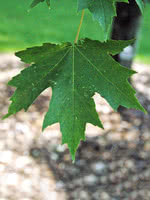Mon-Fri 9am - 5pm Mountain time
Black Locust vs Armstrong Maple
Robinia pseudoacacia
Acer x freemanii Armstrong
NOT AVAILABLE THIS SEASON - MIGHT RETURN
Black Locust is an attractive tree. Its distinctive leaves are made of about a dozen bright green leaflets. It also notable for its fragrant white flowers, which smell of citrus.
Black Locust can grow in many situations, but prefers dry areas with lots of sun. It is robust and is an excellent choice for establishing shade in dry, open areas.
Important note: Much of the Black Locust is toxic to humans and livestock, including seeds, bark, and leaves.
The Armstrong Maple has a narrow, upright columnar growth habit. This stunning tree has showy leaves that range from yellow, orange to red in the fall. It is an attractive hybrid of the Red Maple and Silver Maple. It prefers acidic soils and will have some tolerance for drought once mature.
Edward Murray named the Armstrong Maple in 1969 in honor of Oliver M. Freeman of the National Arboretum, who made the first controlled cross between the two species in 1933.

